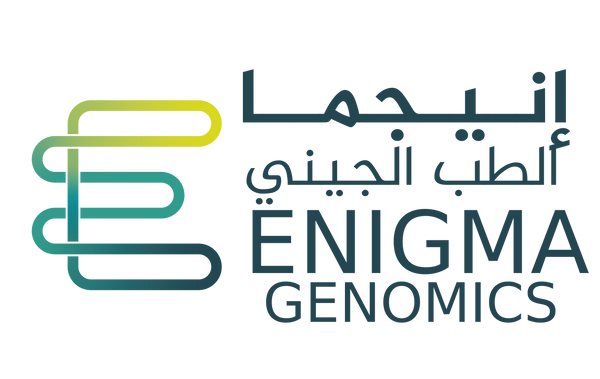
Albinism Genetics and diagnosis
The term "albino" originates from the Latin word "albus," which means white. Individuals with albinism are characterized by very pale hair, eyes, and skin. Albinism, also known as leucism or hypopigmentation, affects 1 in every 20,000 people worldwide, though this rate varies by region, race, and gender. For example, in Africa, albinism affects 1 in every 3,000 people.
Albinism is a primary genetic disorder caused by genetic mutations, leading to an increased likelihood of vision and skin problems.
In this article, we will highlight the genetic causes of albinism, its symptoms, and the importance of genetic testing for diagnosis and prevention.
What is Albinism?
Albinism is a rare genetic disorder caused by mutations in the genes responsible for producing melanin, the pigment that determines the color of skin, hair, and eyes. Melanin also plays a role in the development of the optic nerve and protecting the skin from harmful sunlight. Therefore, a deficiency in melanin can lead to increased risks of vision and skin problems.
Albinism is not contagious; it is an inherited recessive condition, meaning the symptoms do not appear in the parents but are passed down to the children when they inherit two copies of the gene with the mutation causing albinism.
Types of Albinism
There are several types of albinism, which vary based on the amount of melanin in the body. The most notable types include:
Oculocutaneous Albinism (OCA)
This is the most common type of albinism, resulting from mutations in one of seven genes (from OCA1 to OCA7). Individuals with OCA have very pale skin, hair, and eyes.
Ocular Albinism
This type of albinism affects only the eyes and is less common. People with ocular albinism typically have blue eyes, normal skin, and hair color, although the iris may appear pink or light red in some cases due to the visibility of blood vessels.
Hermansky-Pudlak Syndrome
This form of albinism includes the typical symptoms of oculocutaneous albinism, along with blood disorders, easy bruising, and issues with the lungs, kidneys, and intestines.
Chediak-Higashi Syndrome
This type of albinism also involves the symptoms of oculocutaneous albinism, in addition to problems with the immune and nervous systems.
Symptoms of Albinism
Some of the most prominent symptoms of albinism include:
- Extremely light hair, skin, and eye color.
- Skin patches with no pigment.
- Sensitivity to light and sun, increasing the risk of skin cancer and sunburn.
- Vision problems such as photophobia (sensitivity to light), astigmatism (blurred vision), and involuntary eye movements (nystagmus).
- Strabismus (crossed eyes).
Albinism can also lead to other complications, such as weakened immunity, hearing problems, bleeding issues, and blood clotting disorders.
Treatment of Albinism
Currently, there is no cure for albinism, but its symptoms can be managed through:
- Wearing eyeglasses and Sunglasses. To protect the eyes.
- Using Sunscreen. To protect the skin and avoid prolonged sun exposure as much as possible.
- Wearing Protective Clothing. To cover most of the body.
- Regular Medical Check-ups. For eye and skin examinations.
For strabismus (crossed eyes), surgical intervention may be used to correct the eye alignment, or other supportive measures such as specialized exercises and games designed to help children improve their vision. The most suitable treatment option should be determined in consultation with a doctor.
Importance of Genetic Testing in the Prevention and Early Diagnosis of Albinism
Genetic testing plays a significant role in:
Early Diagnosis
Genetic testing helps in early identification of the genetic causes of albinism through pre-marital and pre-pregnancy screenings, exome sequencing, and comprehensive genomic testing. This can determine if the couple carries any genetic mutations that could cause albinism in their future children, and provide necessary recommendations.
Planning for a Healthy Family
Genetic testing assists couples who are planning to marry or those who are already married in identifying genetic mutations that may cause albinism or other hereditary diseases. This increases the chances of having healthy children by identifying carriers of albinism-causing mutations through pre-marital and pre-pregnancy screenings or carrier screening, and offering necessary recommendations.
Developing Diagnostic Methods
Genetic testing can lead to the discovery of additional genes whose mutations cause albinism or uncover previously unknown types of albinism. This helps to develop a more comprehensive understanding of how these genetic changes contribute to albinism and improves diagnostic accuracy.
Genetic Counseling
Genetic counseling guides individuals to the appropriate testing procedures and recommends the most comprehensive genetic tests based on their health and family history. Counseling also helps determine the recurrence risk of albinism in the family based on the degree of relatedness. The role of a genetic counselor extends beyond the pre-test phase, helping individuals understand their test results, providing necessary recommendations and guidance, and offering psychological support.
In summary, genetic testing and counseling are essential tools for early diagnosis, prevention, and effective management of albinism, aiding individuals and families in making informed decisions about their health and future.
Enigma Genomics provides comprehensive genetic tests for hereditary diseases, such as premarital screening, which covers more than 550 hereditary diseases, Whole Genome Sequencing, which covers more than 7,500, and Whole Exome Sequencing, which covers 7,000 genetic diseases and others to help you in the journey of maintaining your health and the health of your family.
